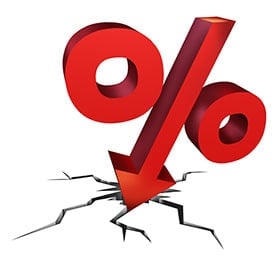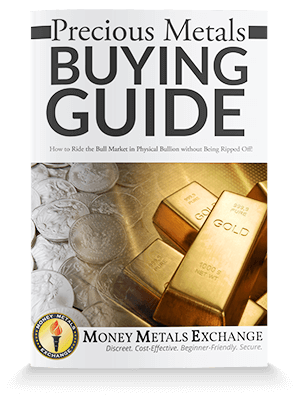During turbulent times like these, markets can be melting down one day… and zoom higher the next. Gold may serve as a fantastic safe-haven asset one day… but get hammered by futures traders the next.
The news cycle can be just as volatile. One report may show the coronavirus is receding in China, while another may raise alarms about its spread in other parts of the world.
One poll may show a socialist candidate for President on the rise, while another may show Americans overwhelmingly approve of President Donald Trump’s handling of the economy.
We have a record-low unemployment rate (at least officially), but financial markets have become more unstable than at any time since the 2008 financial crisis.
To quote Charles Dickens, “It was the best of times, it was the worst of times, it was the age of wisdom, it was the age of foolishness, it was the epoch of belief, it was the epoch of incredulity, it was the season of Light, it was the season of Darkness, it was the spring of hope, it was the winter of despair…” (A Tale of Two Cities, 1859).
Long-term investors shouldn’t despair over volatile market conditions. Drawdowns create value opportunities – though not always in the most obvious places.
Liquidation events also trigger reactions from central bankers, which in turn create new market distortions and risks – as well as new opportunities.
Last week’s global stock market mini-crash drew a massive response from concerned central bankers around the world:
- The People’s Bank of China sought to prop up Chinese equities with direct interventions.
- The European Central Bank announced that it “stands ready to adjust all its instruments, as appropriate.”
- The Bank of Japan, said it would “strive to provide ample liquidity.”
- The U.S. Federal Reserve vowed to “use our tools and act as appropriate to support the economy.”
Meanwhile, the World Bank and International Monetary Fund pledged to provide assistance to countries that need it.
Last Tuesday morning, Treasury Secretary Steven Mnuchin and Federal Reserve Chairman Jerome Powell joined finance ministers and central bank heads from G7 countries to hold emergency talks and give carefully crafted reassurances over the coronavirus pandemic.
The only medicine central bankers know how to administer is interest rate cuts and stimulus injections.”
“There will be coordinated action,” said French Finance Minister Bruno Le Maire.
Of course, these economic central planners know next to nothing about how to fight a virus. The only medicine they know how to administer is interest rate cuts and stimulus injections.
The Dow Jones Industrials surged a record 1,293 points Monday as investors anticipated a globally coordinated plunge protection response. The 10-year Treasury note yield also traded down to a record low – well below the current Fed funds target rate of 1.50%-1.75%. The U.S. Dollar Index also slid on the day.
In effect, financial markets were reacting as if the Fed had already cut its benchmark rate. And then the Fed followed through with an "emergency cut" of 50 basis points the next morning.
Goldman Sachs economists are now forecasting that Jerome Powell and company will slash rates another 50 basis points later this year.
That would effectively reinstate ZIRP (Zero Interest Rate Policy), leaving the Fed with a very limited conventional toolkit to fight the next financial crisis or recession.

Powell would have to face the prospect of pursuing negative interest rates or initiating direct “helicopter drops” of stimulus into the financial system.
When Europe and Japan began pursuing negative interest rate policies, they did little to stimulate moribund economies. Instead, they drove capital into higher-yielding U.S. assets, including Treasuries, and helped boost the U.S. dollar.
When the U.S. goes to zero or negative on interest rates, there will be no place in the world left to go for decent yields – or at least, no place big enough and safe enough to absorb trillions of dollars in global capital flight.
That leaves gold and other hard assets as potentially the prime beneficiaries of a global race to debase. If cash has no yield, then gold looks even better than ever in comparison.
Gold had surged to a 7-year high of $1,680 in late February before getting smashed last Friday. Whether the selling was due to margin calls, forced liquidation carrying over from the stock market, or a “coordinated action” by bankers, it stands in contrast to the strong buying of physical gold and silver seen by bullion dealers in recent days.
Now that fear has returned to financial markets and central bank monetary spigots have been turned open, we would expect investment demand for bullion to continue gaining strength.
A major increase in retail precious metals demand won’t necessarily have an immediate impact on spot prices, which are set by futures traders. But over time an increase in physical buying will put pressure on the very limited global supply of precious metals.
When it’s the worst of times for markets that central bankers are trying to prop up, the best of times may follow in months and years ahead for gold and silver markets.

About the Author:
Stefan Gleason is CEO of Money Metals Exchange, the company recently named "Best Overall Online Precious Metals Dealer" by Investopedia. A graduate of the University of Florida, Gleason is a seasoned business leader, investor, political strategist, and grassroots activist. Gleason has frequently appeared on national television networks such as CNN, FoxNews, and CNBC and in hundreds of publications such as the Wall Street Journal, TheStreet, and Seeking Alpha.





